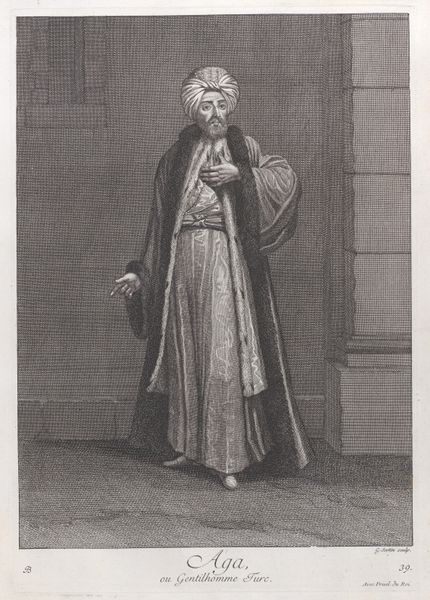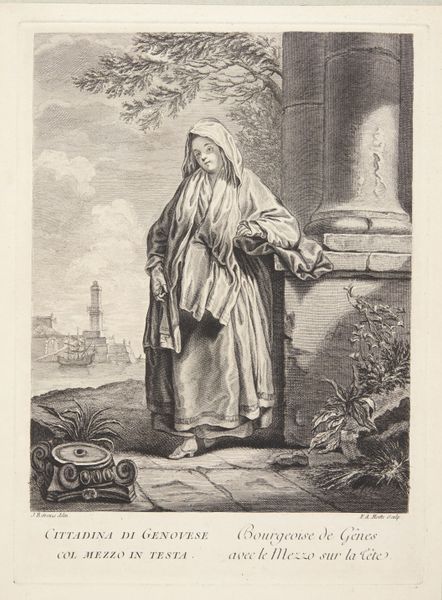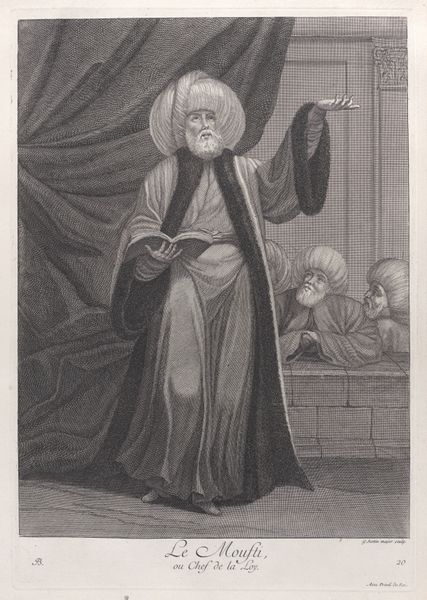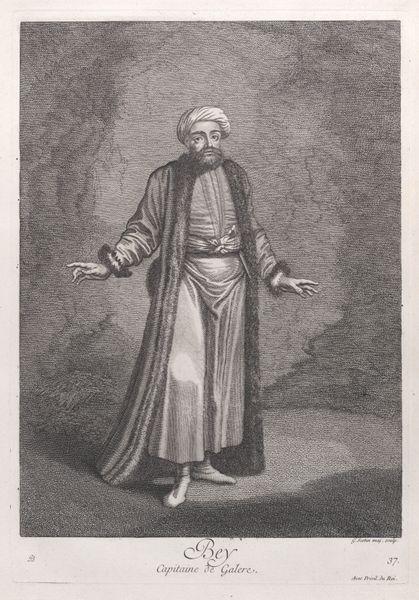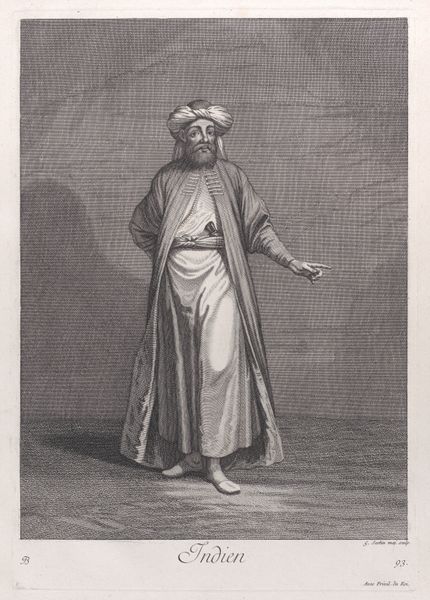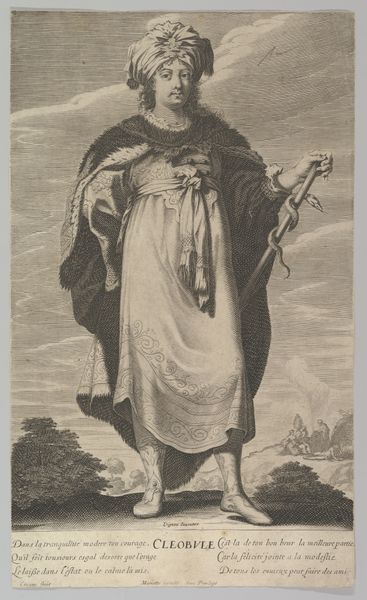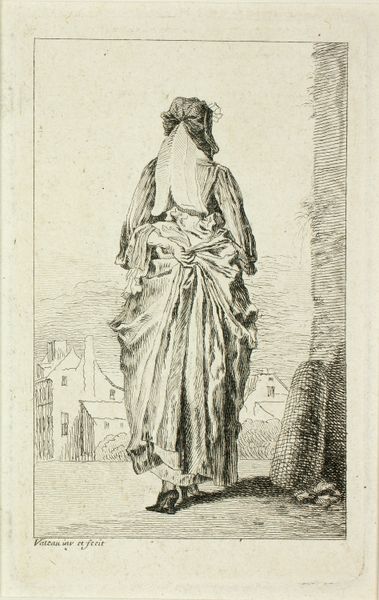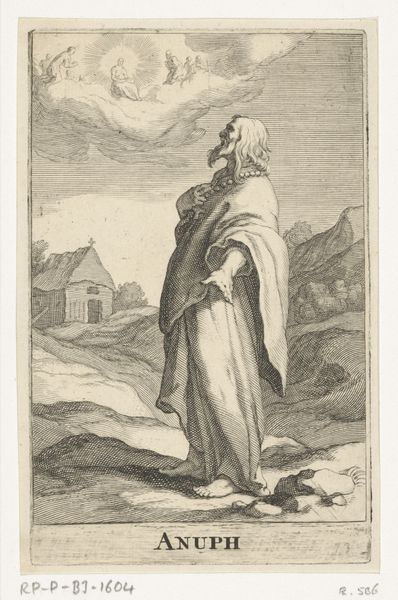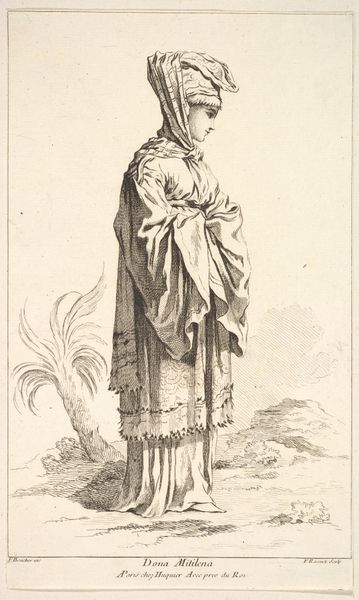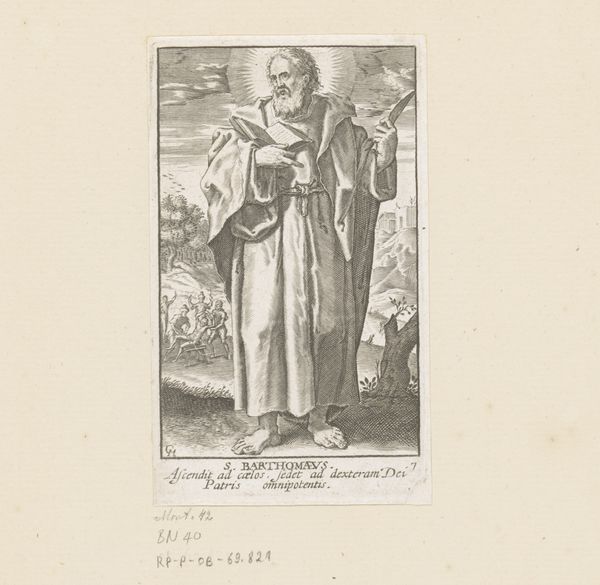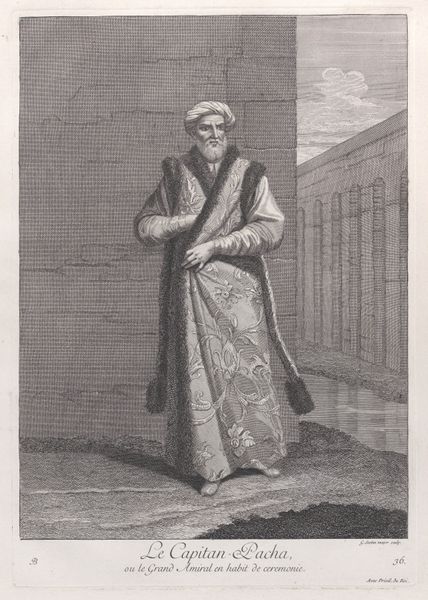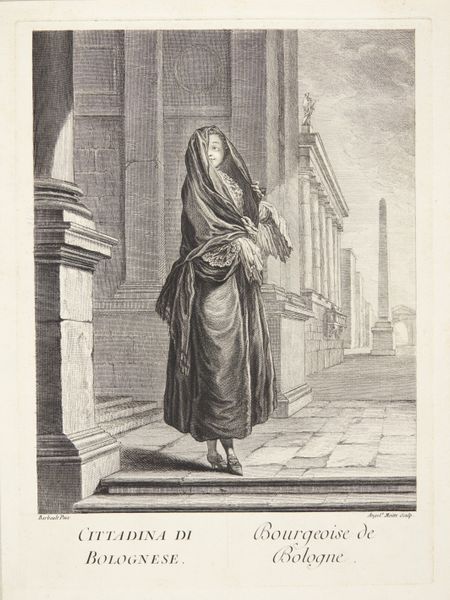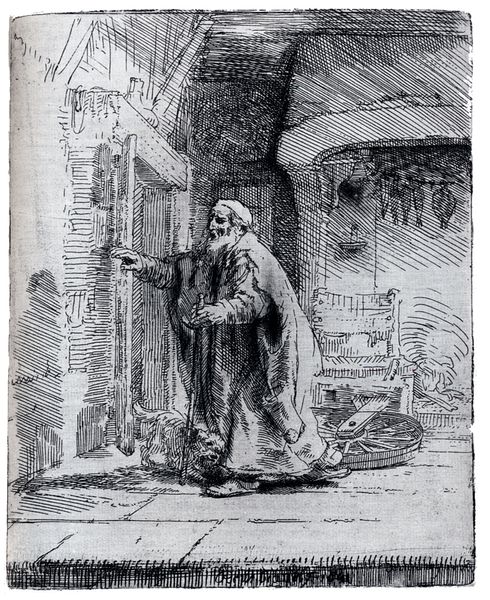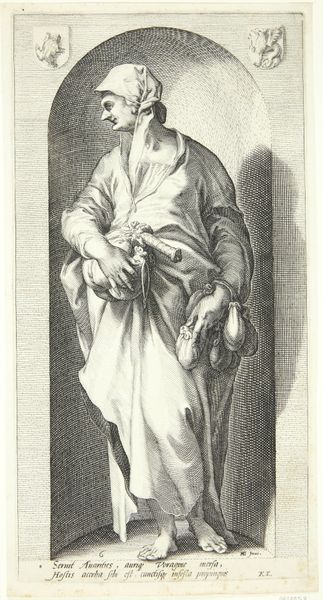
Juif, plate 63 from "Recueil de cent estampes représentent differentes nations du Levant" 1714 - 1715
0:00
0:00
drawing, print, engraving
#
portrait
#
drawing
#
baroque
# print
#
figuration
#
orientalism
#
men
#
history-painting
#
engraving
Dimensions: Sheet: 16 7/16 in. × 12 in. (41.7 × 30.5 cm) Plate: 14 1/8 × 9 3/4 in. (35.8 × 24.8 cm)
Copyright: Public Domain
Curator: Here we have a piece by Jean Baptiste Vanmour, dating back to 1714-1715. It's an engraving, titled "Juif, plate 63 from 'Recueil de cent estampes representent differentes nations du Levant'". The print is part of a series focusing on various peoples of the Levant. What's your first take? Editor: Austere. Immediately I notice the contrast; the light etches the figure dramatically against a backdrop of stone walls. It evokes a sense of… I don’t know, contemplation bordering on isolation? Curator: That sense of isolation is interesting. Vanmour, embedded within the Ottoman court, wasn't merely documenting but interpreting. The series aims to present an objective record of different populations living in the Ottoman Empire. This work invites discussions on representation, "otherness," and the European gaze, and I can't help thinking about Edward Said's work when I examine it. How does this portrayal feed into or challenge prevalent Orientalist narratives of the time? Editor: It’s tricky, isn't it? The meticulous detail suggests an attempt at ethnographic accuracy – look at the care with which he’s rendered the clothing, the turban. But it is important to note that the portrayal still flattens the Jewish individual to represent an entire "nation." What is his inner life? What do we truly learn? The print serves more as a projection screen for European preconceptions, doesn't it? It almost positions him as an exhibit, part of an array of curiosities. Curator: Indeed. Consider, too, the title itself – “Juif," which translates to “Jew." A stark label. There is no name given. How does this anonymity strip agency from the person depicted, reducing him to a mere representative of his faith? Does that artistic choice contribute to his aura of otherness? I ask myself: is it history or commentary? Editor: The landscape does, perhaps, reveal some hidden meaning. We glimpse a hint of civilization with that wall, contrasted against his position next to an open doorway, one crumbling at that. Are we being told something about his status, his community's history and endurance even as the stones around him fall apart? Curator: It’s a powerful, ambiguous piece. It certainly leaves us pondering on the nuances of cultural exchange, observation, and the ever-present power dynamics at play in representation. Editor: Absolutely. It acts as a potent reminder of how easily visual narratives can become entangled with ideologies and assumptions, ones we must diligently unpack.
Comments
No comments
Be the first to comment and join the conversation on the ultimate creative platform.
